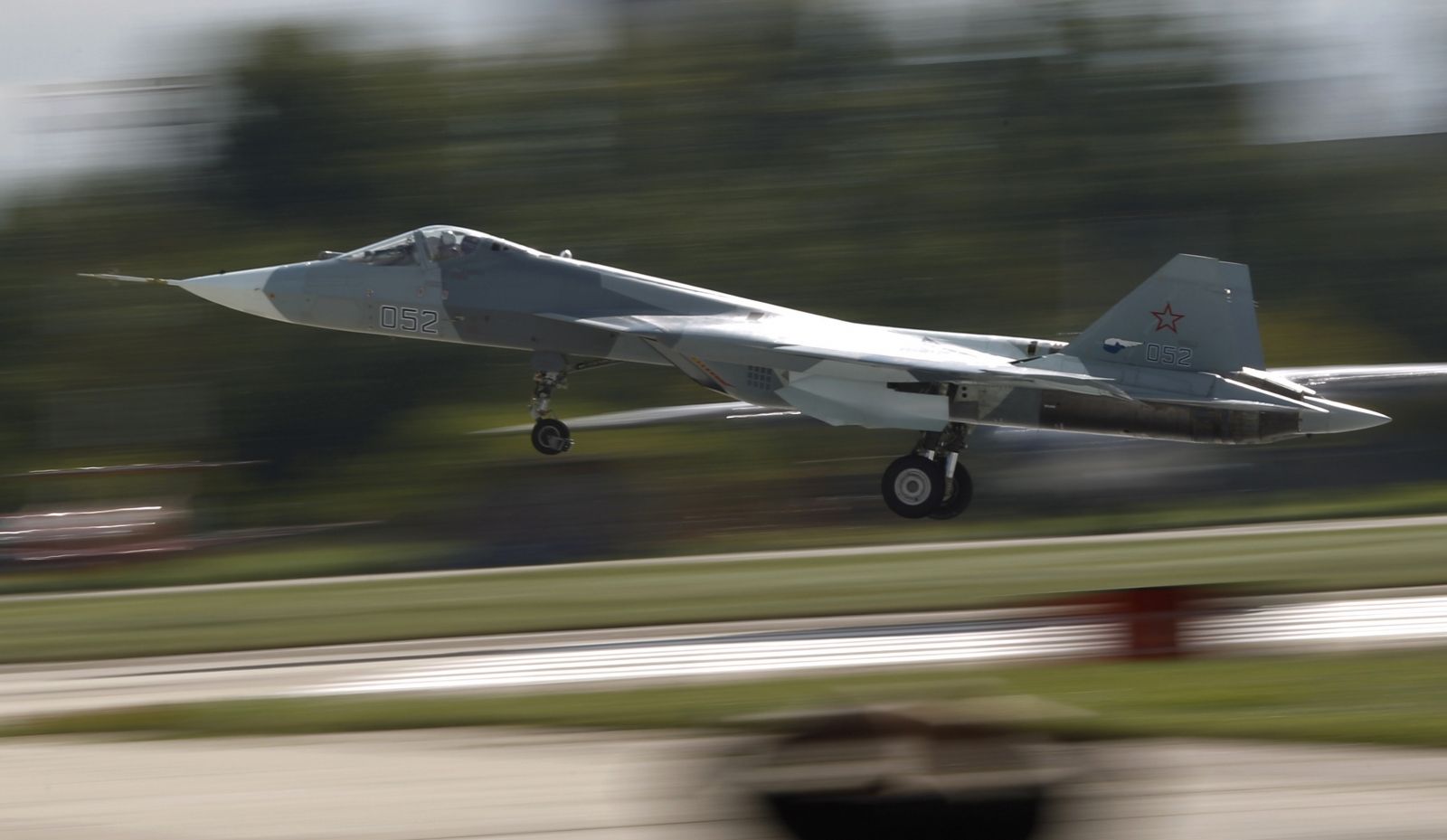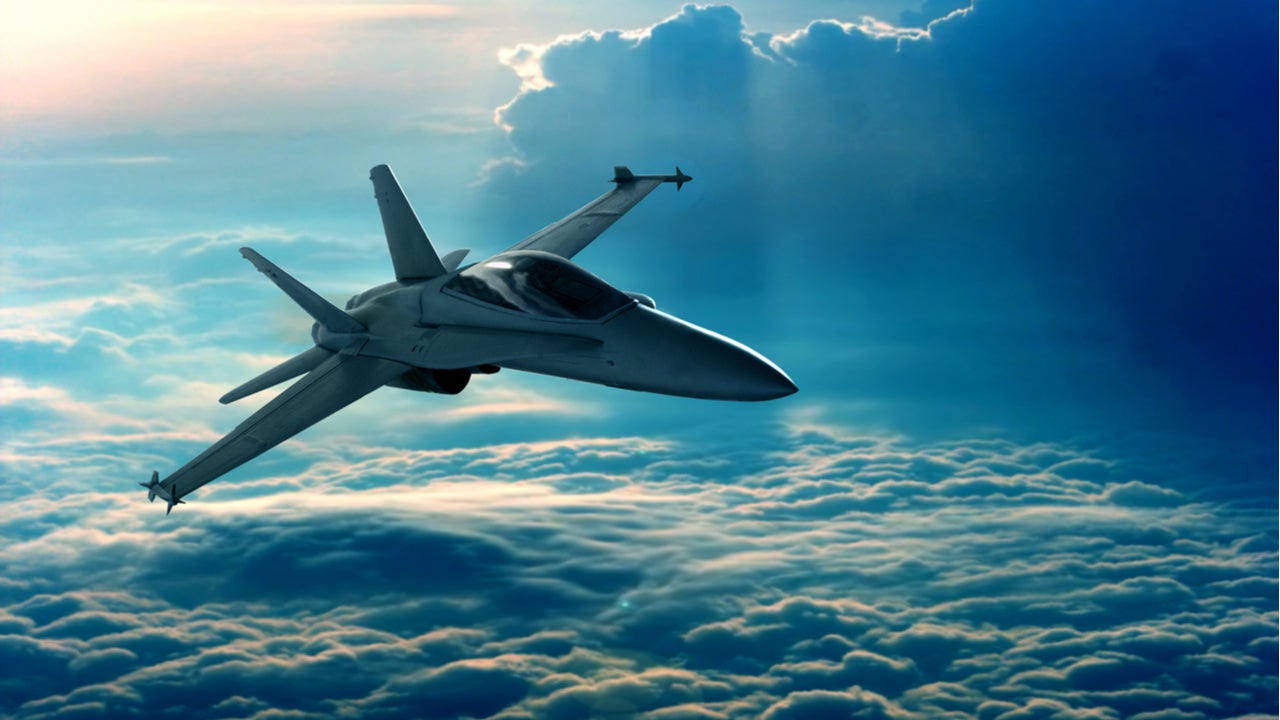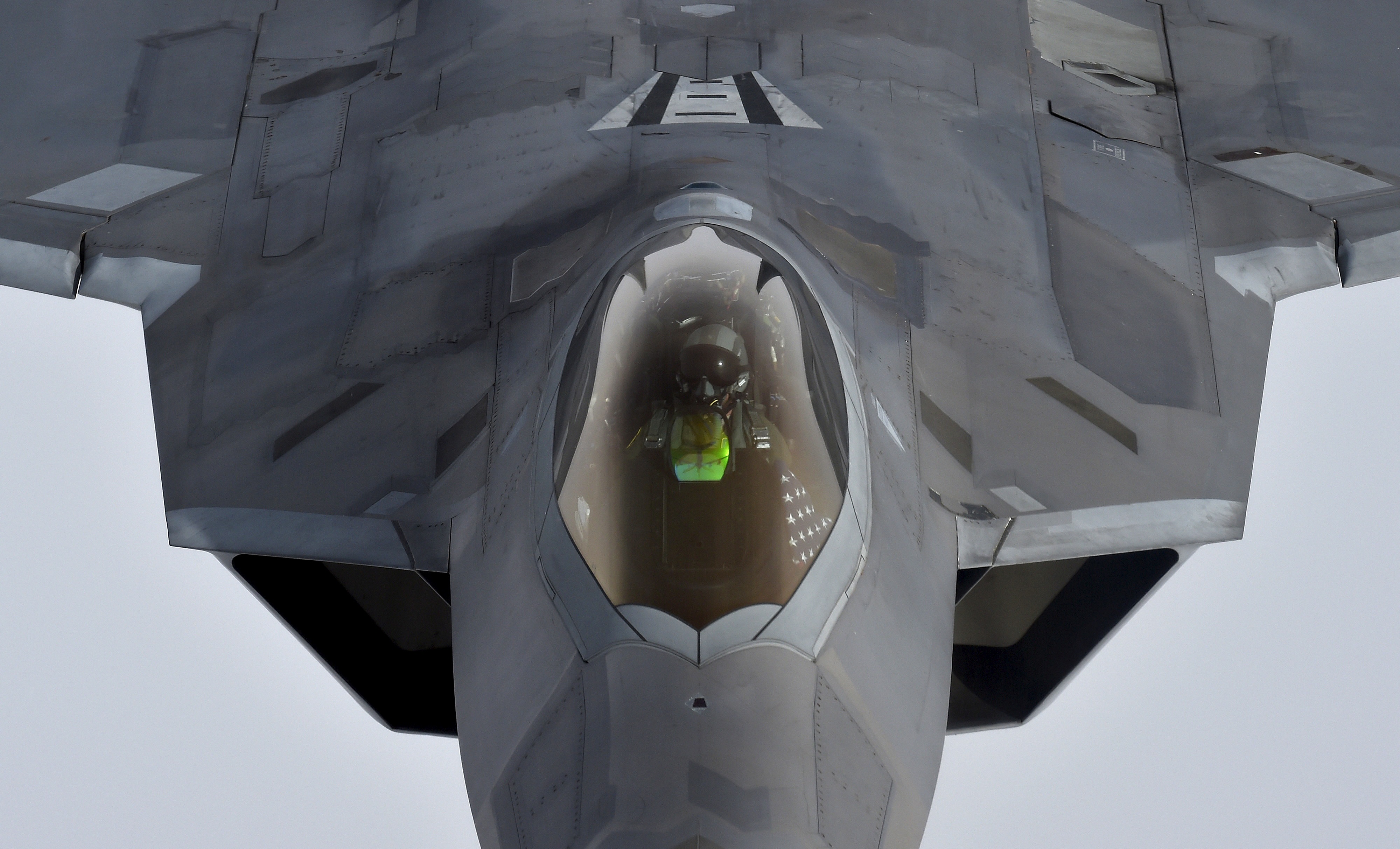Russian Next Generation Fighter Jet - It is a product of PAK FA (Russian: ПАК ФА, short for: Перспективный авиационный комплекс фронтовой APK FA (Russian: ПАК ФА, short for: (Mikoyan Project 1.44/1.42)) Sukhoi's internal designation for the aircraft is T- 50. The Su-57 is the first aircraft in Russian military service designed with stealth technology and is intended to form the basis of a family of stealth fighter aircraft.
A versatile fighter capable of air-to-air combat as well as land and sea attacks, the Su-57 features stealth, super-maneuverability, super-cruise, combined flight and large internal payload capacity.
Russian Next Generation Fighter Jet
The aircraft is expected to succeed the MiG-29 and Su-27 in Russian military service and will also be sold for export. The first prototype aircraft flew in 2010, but the program would experience prolonged development due to various structural and technical problems arising during testing, including the destruction of the first production aircraft in a crash before its delivery. After repeated delays, the first Su-57 was retired from service with the Russian Air Force (VKS).
Get Ready, Russia And China: America's Next Fighter Jet Will Dominate The Skies
In 1979, the Soviet Union outlined the need for the next generation of aircraft intended for service in the 1990s. This program became the I-90 (Russian: И-90, abbreviated: Истребитель 1990–х годов, lit. '1990s Fighter') and required the fighter to be "multi-functional" (ie, multi-role). fighter capabilities, and eventually replacing the MiG-29 and Su-27 front-line tactical aviation. Two subsequent projects were designed to meet these requirements: the MFI (Russian: мфи, abbreviated: фнлонтовой, lit. 'Multifunctional Frontline Fighter') and the diminutive LFI: '), conceptual work began in 1983. .
Although not a participant in the MFI, Sukhoi began its own program in 1983 to develop technologies for the next-generation fighter, resulting in the forward-moving S-32 experimental aircraft, then the S-37 and the redesign of the Su-47. was MFI was repeatedly delayed due to lack of funding after the dissolution of the Soviet Union, and the first flight of the MiG 1.44/1.42 prototype did not occur until 2000, nine years behind schedule.
Due to high costs, the MFI and LFI were eventually canceled as the Russian Ministry of Defense began work on a new next-generation fighter program; In 1999, the ministry initiated the PAK FA or I-21 program, and the competition was announced in April 2001.
Due to Russia's financial difficulties, the program aims to control costs by producing a multirole fifth-generation fighter that will replace both the Su-27 and MiG-29. Additional cost-saving measures include a size between the Su-27 and MiG-29 and a smaller average takeoff weight than the MiG MFI's 28.6 tons (63,000 lb) and the Su-26.8's 47 tons (59,000 lb).
Top Sixth Generation Fighter Jets
Sukhoi's approach to the PAK FA competition was fundamentally different from Mikoyan's; Mikoyan proposed that the three design bureaus (Mikoyan, Sukhoi, and Yakovlev) work in unison with the winning team leading the design effort, while the Sukhoi proposal itself led the design from the beginning and a joint work agreement covered the wheel development and production cycle, propulsion and from aircraft suppliers to research facilities. Additionally, these two companies have different design philosophies for the aircraft. Mikoyan's E-721 was smaller and more affordable, with an average takeoff weight of 16–17 tons (35,000–37,000 lb) and 10–11 tons (98.1–108 kN , 022,020,020,020 lb). 02,02,02,02,02,000) powered by a pair of Klimov VK-10M engines. 24,300 lbf) of thrust each. In contrast, Sukhoi's T-50 will be larger and more capable, with an average takeoff target of 22–23 tonnes (49,000–51,000 lb) and powered by a pair of Lyulka -Saturn AL-41F1 engines. 14.5 ton (142 kN, 32,000 lbf) class.
In April 2002, the Ministry of Defense selected Sukhoi to replace Mikoyan as the winner of the PAK FA competition and the lead design bureau for the new aircraft.
In addition to the merits of the proposal, Sukhoi's experience in the 1990s is taken into account, including the successful development of various Su-27 derivatives and numerous exports that ensure its financial stability.

Mikoyan continued to develop its E-721 as the LMFS (Russian: ЛМФС, abbreviated: Лёгкий многофункциональный Флав, lit. 'Light Multifunctional Aircraft'
Meet The Ngad: The 6th Generation Fighter Russia Will Hate
PAK FA's research and development program is called Stolitsa (Russian: Столица, lit. 'capital'). In 2002, Alexander Davidko was selected as the chief designer of Sukhoi's T-50.
Novosibirsk Aircraft Production Association (NAPO) and Komsomolsk-on-Amur Aircraft Production Association (KnAAZ) will develop a new multirole fighter, KnAAZ will hold the final meeting in Komsomol'sk-on-Amur.
After a competition held in 2003, Tekhnokompleks Scitific and Production Cter, Ramskoye Instrument Building Design Bureau, Tikhomirov Scitific Research Institute of Instrument Design (NIIP), Ural Optical and Mechanical Plant (UOMZ) in Poletvgo in Yekaterinburg and PAK FA radio set development The Central Scientific Research Radio Engineering Institute in Moscow was chosen to do this. In April 2004, NPO Lyulka-Saturn (now NPO Saturn) was signed as the contractor for AL-41F1 engines with the developmt designation izdeliye 117.
Sukhoi used existing airframes as test beds for various subsystems and concepts; The Su-47 tested internal weapons and served as a testbed for the Su-27M prototype flight control system and engines.
Russia's New Jet Fighter Aims To Rival U.s. In Air—and On Geopolitical Map
Sukhoi implemented some of the T-50's technologies and features, such as propulsion and some avionics, in an advanced derivative of the Su- to reduce development risk and associated cost spreads, as well as bridge the gap with existing fourth-generation fighters. 27 known as the T-10BM (Russian: БМ, abbreviated: большая модностирация, lit. 'major modernization'), which was eventually purchased by the Russian Ministry of Defense in 2009 and renamed the Su-35S in 2014.
In December 2004, the conceptual design and shape of the T-50 was completed and approved by the Ministry of Defense; Government funding for the program began in 2005 and increased significantly in 2006 while detailed design was underway.
On August 8, 2007, the head of the Russian Air Force, Alexander Selin, was quoted by Russian news agencies as saying that the development phase of the program has been completed and the construction of the first aircraft will begin for flight tests of three capable aircraft. The T-50 prototypes are scheduled to be built in 2009.

From the early stages of the PAK FA program, Russia sought foreign partnerships in the project to increase funding for its development and secure large export orders.
Russia's Su 57 Outshines Us Fifth Generation Fighters, Says Expert
On 18 October 2007, Russia and India signed an agreement for Sukhoi and Hindustan Aeronautics Limited (HAL) to jointly develop a derivative of the PAK FA called the Fifth Generation Fighter Aircraft (FGFA).
In September 2010, India and Russia agreed to a basic planning agreement in which each country would invest $6 billion; A memorandum of understanding for the initial design was signed in December 2010, and construction of the FGFA is expected to take 8–10 years.
However, by 2014, the Indian Air Force began to express concerns about performance, cost and workload. India eventually withdrew from the partnership in 2018.
The T-50's maiden flight was repeatedly postponed from early 2007 after encountering specific technical problems. In August 2009, Alexander Selin admitted that problems in genetics and technological research remain unsolved.
Did Northrop Grumman Just Unveil A New 6th Generation Fighter Jet?
On 28 February 2009, Sukhoi geral director Mikhail Pogosyan announced that the airframe was almost complete and the first prototype should be ready by August 2009.
On August 20, 2009, Pogosyan said that the first flight d. Konstantin Makiyko, deputy head of the Moscow-based Ctre for strategy and technology analysis, said that "with delays", the plane will probably make its first flight in January or February, and commercial production will take five to t years. . .
Flight tests were further delayed when Deputy Prime Minister Sergei Ivanov announced in December 2009 that the first tests would begin in 2010.

The first taxi test was successfully completed on December 24, 2009, and the maiden flight of the first prototype aircraft, the T-50-1, took place on January 29, 2010.
Russia Pushing Ahead For 6th Generation Jet
Piloted by Sukhoi test pilot Sergey Bogdan, the plane's 47-minute maiden flight took place at KnAAPO's Dzemgi airfield in the Russian Far East.
Prototype construction is progressing more slowly than originally planned; As of October 2013, the test program has accumulated more than 450 flights on five aircraft.
Three flying and three non-flying T-50 prototypes are being developed for initial flight tests and government trials.
Initially, the program planned up to six prototypes before starting serial production; However, tests show that early prototypes lacked sufficient fatigue strength, and early structural cracks developed in the airframe.
Although It's Still Struggling With The Pak Fa, Russia Is Already Working On 6th And 7th Generation Fighters
The aircraft underwent a structural redesign, with changes including increased use of composite materials, reinforced airframe to meet life cycle requirements, extended tail "bite" and slightly wider wings; The sixth flyable prototype was the first of the redesigned "Phase Two" aircraft, while the first five prototypes are considered "Phase One" vehicles and require additional structural reinforcement to proceed with flight testing.
The last two flying prototypes are test articles of Su-57 aircraft production with complete operational systems.
While the "second stage" structural redesign reduced the weight gain from the required strength

Mig 21 fighter jet, mig 35 fighter jet, mig 29 fighter jet, mig 15 jet fighter, mig 31 fighter jet, new mig fighter jet, mig 25 fighter, mig 39 fighter jet, mig jet fighter for sale, f 25 fighter jet, mig 25 jet, latest mig fighter jet
